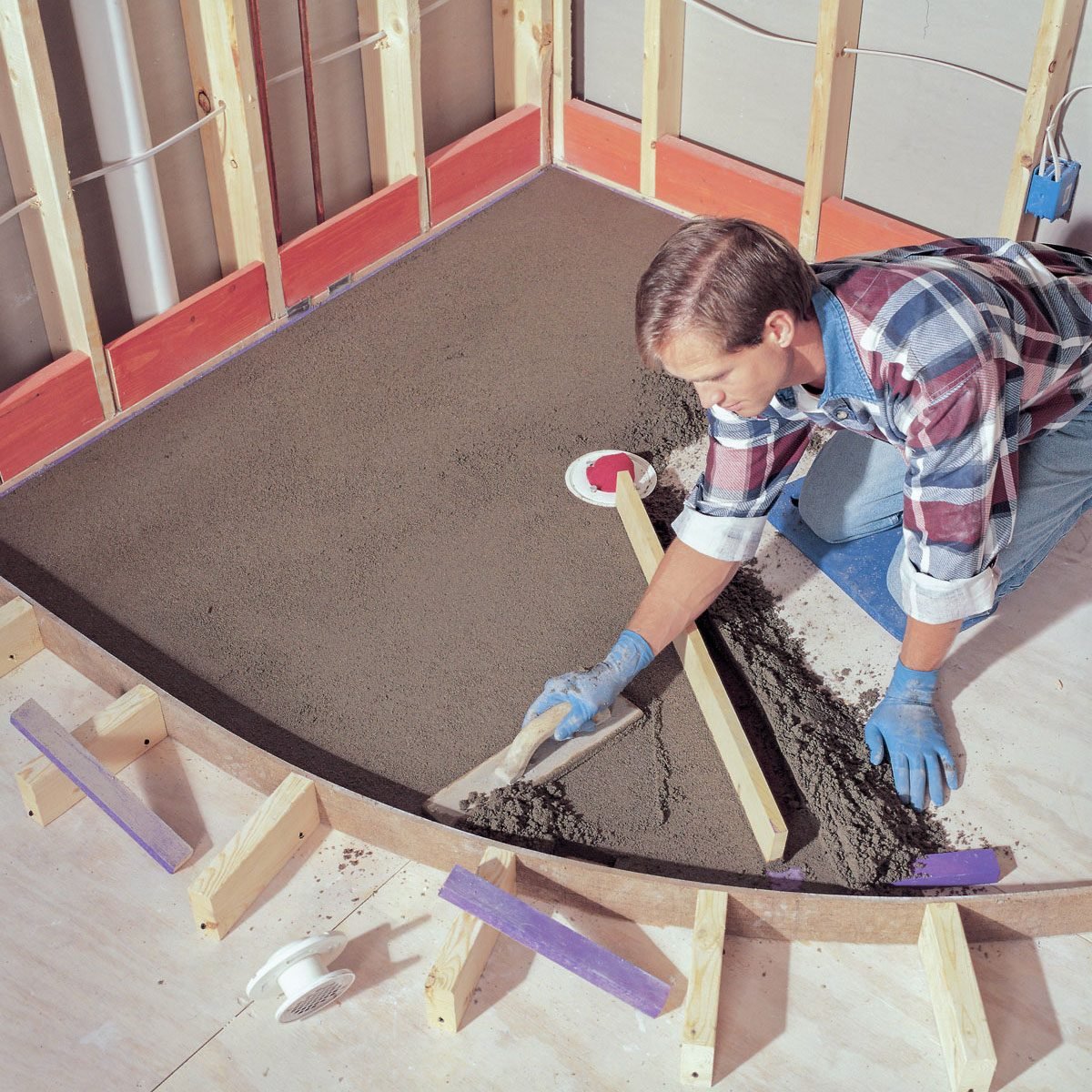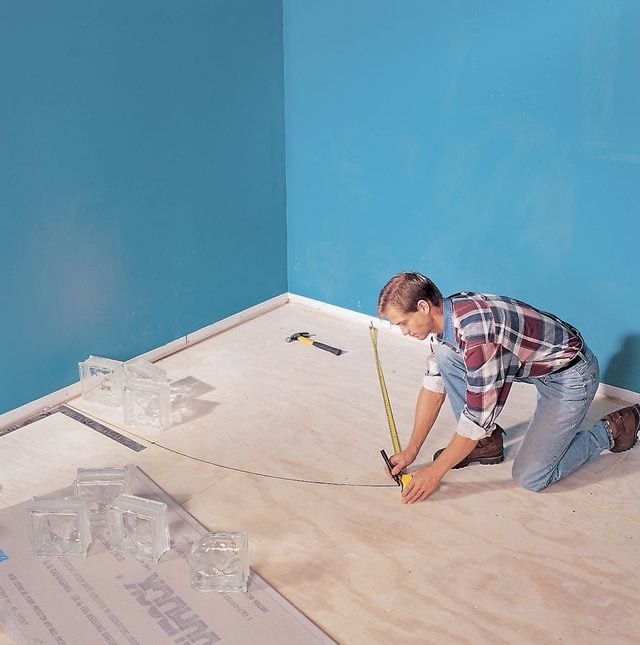


Learn how to DIY a custom-sized, waterproof pan for a tile shower by following these step-by-step instructions.
![]()
Time
![]()
Complexity
![]()
Cost
$200 to $250 not including tile
A custom tile shower is a beautiful addition to any bathroom space. Not surprisingly, that shower also comes with a steep price tag if you have to hire a contractor to install it.
If you have intermediate DIY skills, you can build your own one-of-a-kind tile shower and save thousands in labor costs. Here, I'll guide you through the step-by-step process of building a traditional shower pan, covering everything from preparation and materials to the actual construction and waterproofing techniques.
Two industry experts, Derek Berard from Viable Construction and Chris Bernacki from WnC Home Improvement, weigh in to offer first-hand insights into this time honored shower-building technique.
If you want to put in a shower, you could go to a home center and pick up a fiberglass or acrylic shower base. A pre-formed single piece unit, Berard says "a shower base is set into a mud base on the floor, then screwed into the wall to install."
Before this was possible, pros had to build a custom shower pan by mixing and applying mortar, troweling it flat and laying ceramic shower floor tile. This is the method I'll outline here.
There are modern alternatives to building a shower pan, too. "Today's shower pans can be a pre-formed, pre-sloped foam pan that is then waterproofed and tiled over," Bernacki says.
Many contractors today prefer the pre-formed pans because they're faster to install. But this is a tried-and-true method used for decades.
Two inches is typical. "Down by the drain is thinner due to the slope," Berard says. This can vary, depending on the overall shower floor dimensions.
While both provide a waterproof shower floor, the similarities end there. Shower pans are custom-built, finished with tile and take more skill to install than a shower base. Although fiberglass shower base units make installation quick and easy, they lack the uniqueness of a handcrafted mortar and tile floor.
A shower base also costs more, between $500 to $1,000, compared to $200 to $250 for a shower pan. (Tile is extra.)
However, a shower base can be installed in a day while a shower pan takes several days to complete, including tile work. Another difference? "Improperly constructed shower pans can leak water," Bernacki says. You can mitigate that risk with a one-piece shower base.
To build a shower pan in the traditional style outlined here, Berard recommends a five-to-one ratio of sand and Portland cement.
Sloped fill, waterproof membrane, metal lath and sloped mortar bed. Shower pans also contain a curb to contain water in areas that aren't bordered by walls. The curb, integrated into the design, and is usually four inches from the floor, Berard says.
A sloped fill layer is simply a mortar subfloor. It's sloped toward a special two-piece clamping-type drain (available at any home center) made specifically for a mortar bed shower floor. The sloped fill slants from the drain toward the perimeter of the shower.
The second layer, called the pan, is a durable chlorinated polyethylene (CPE) membrane. When installed, this vinyl liner turns up at the edges to create a waterproof membrane in the shape of a shallow pan. Water that works its way through the grout and the top layer of mortar will flow down the slope to be drained through the weep holes of the drain.
A layer of expanded galvanized metal lath on top of the pan reinforces the mortar. A final sloped mortar bed is laid over the lath.
According to Berard, 1/4-in. per foot from the drain to the perimeter is standard.
This project requires plumbing skills to install the shower drain. If you're not comfortable with this aspect of the project, call a pro. Shower pans also need to be installed correctly or risk leaks and water damage. If this project is above your skill level, hire a pro.
Derek Berard is the owner of Viable Construction Inc, a home remodeling company in Westfield, Massachusetts. He has 20 years of experience in the construction and remodeling industries.
Chris Bernacki is the owner of WnC Home Improvement in Holyoke, Massachusetts. He has more than 30 years of experience in the trades, renovating and remodeling commercial and residential properties.
Keep these elements in mind when you’re sizing and positioning your shower.
The tile layout: It’s easier to determine this if you select your wall tile ahead of time. Plan your tile layout to account for edges and corners, and shift the starting point if needed.
Shower doors: If your shower will have a door, pick it out in advance to make sure the shower opening accommodates it. Don’t forget to allow for the thickness of the tile and the cement board. When you’re determining the size of the shower door and the direction it should swing, consider other bathroom doors and fixtures.
Plumbing: It’s much easier to hook up a new shower located near existing plumbing. If you’re installing your shower in a remote location, create a plan that accounts for new plumbing configurations.
Joist span and floor supports: The shower we designed and installed here weighs upward of 1,000 pounds, or about the same as a spa with a couple of people in it!
If you live in an older home with 2×6 or 2×8 floor joists, you may need to beef up the floor with some beams or extra joists. If you’re unsure, consult a building inspector. And if your house was built in the 1970s, it could have a 5/8-in. particleboard underlayment that needs to be removed before starting.

TMB Studio